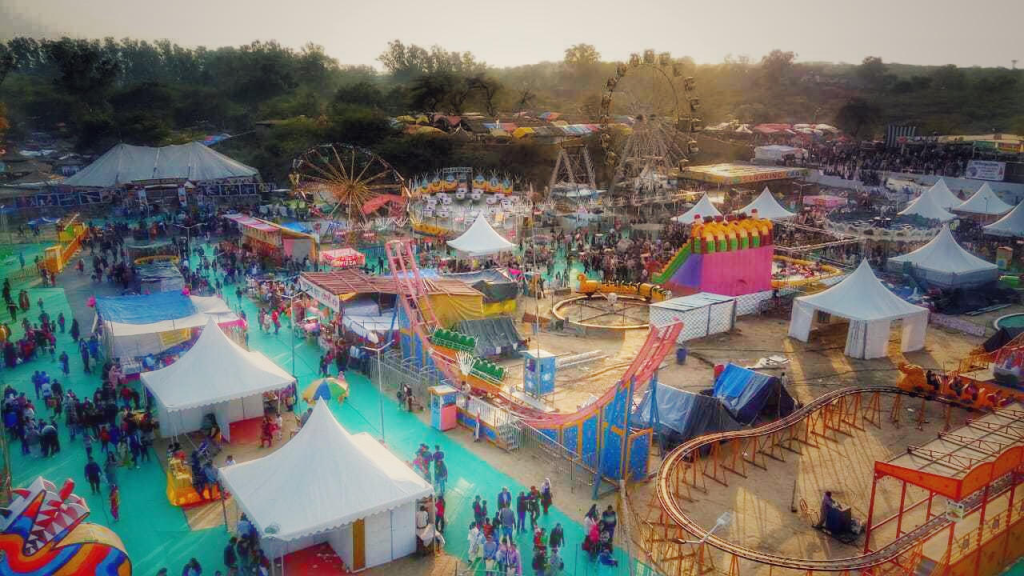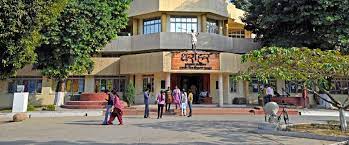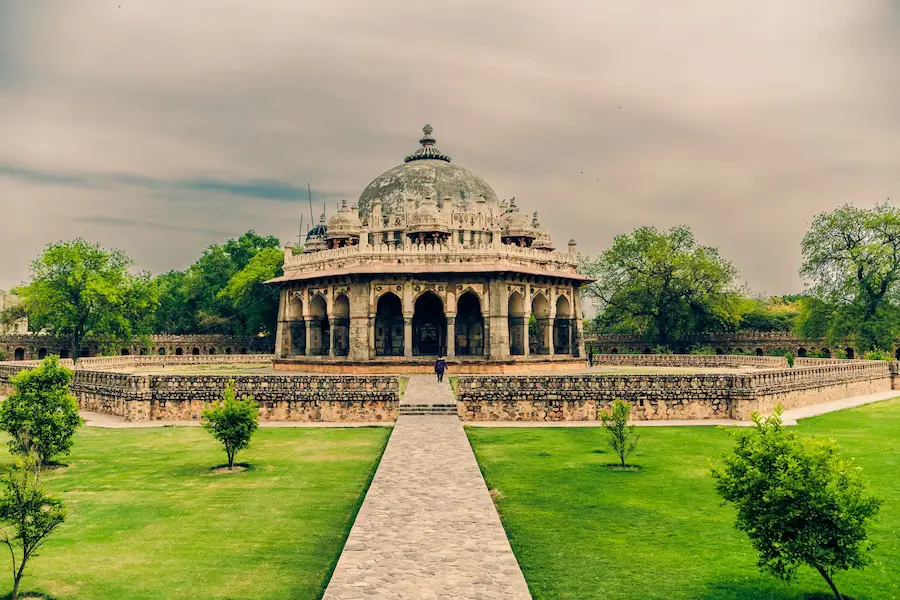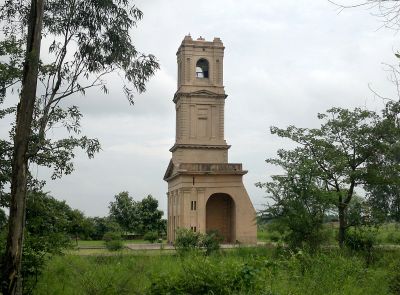Browse Items (153 total)
Sort by:
-
Fortress of islampur
Its appearance is royal and it stands on a slightly raised hillock, while its enclosing walls and basins impart it the look of a fort.
-
Chor Gumbad
At present, this complete hilly area has been developed in a park by the district administration. On account of prominent location of the Chor Gumbad, it is known as the landmark of Narnaul. It is a well-planned big size monument in square shape having single chamber with four minarets at each corner. It gives an appearance of a double-storied structure from the outside due to an open veranda running around it. This structure possibly came to be used as hideouts by thieves and highwaymen, subsequently leading probably to the popular present day name : Chor Gumbad. It was constructed by an Afghan Jamal Khan as his tomb. A low dome and arches show that it must have been constructed during the reign of Firoz Shah Tughlaq (1351-88 AD). At present, there is no grave inside the tomb. -
Birbal Ka Chhatta
This spacious building, built by Ray-i-Rayan Mukand Dass, the Diwan of Narnaul, during the reign of emperor Shah Jahan (1628-58 A.D.) is dexterously planned and embellished, though its exterior is unostentatious and drab. It is a five-storied structure with several halls, rooms and pavilions. The extensive open terrace on the south, elliptical pavillions on different levels, halls on pillars and running verandah around a central court, once adorned with a marble fountain, impart spaciousness and light to it. The profuse use of marble for veneering, pillars and brackets, provided with artificial cataracts and drains, make it a cosy retreat during the tropical summers.
In the south-eastern corner on the terrace, there is a dilapidated well, from which the water was raised into reservoirs, at various levels. An exquisite and isolated gateway-complex, well provided with projecting balconies and marble veneering stand a few metres to the west of the palace. This is said to have been the main entrance to the complex.
It said that Akbar and Birbal visited this town and that is why this structure Chhatta Rai Mukand Das is also popularly known as Chhatta of Birbal.
At a small distance from the Chhatta lies the Sarai Rai Mukand Das. The building bears an epigraph, which states that during the reign of Shah Jahan, Rai-Rayan Mukand Das, a servant of Nawab Asif Khan, built the lofty building under the super vision of Mehta Puran Mal Hari Dass. -
Vishvamitra Ka Tila
Two inscriptions of Gurjar-Pratihara period have been found at Pehowa. One inscription from this place records the creation of three Vishnu temples in this town. Another inscription, still in the Garibnath Mutth at Pehowa, of Raja Bhojdeva of 882 AD, records collection of voluntary tax from each trader for the purpose of maintenance of these Vishnu temples existing there and elsewhere. This site of Vishvamitra ka Tila too contained the remains of one of the Vishnu temples at this place.
This temple site was scientifically cleared under the direction of Shri D.S.Malik of the Department of Archaeology & Museum, Government of Haryana. Scientific clearance of this site yielded beautiful stone sculptures depicting Ramayana and Mahabharata scenes. The remains of an ancient temple plinth made of baked bricks were also found during clearance operation. These are the only known brick temple remains of this kind in this region. -
Sheikh Chaheli’s Tomb
The tomb, overlooking the madarasa and standing on an artificial terrace, is octagonal in shape with the entrance in the south. It is built of buff sandstone and is crowned with a pear-shaped dome of white marble standing on a high circular drum. The cenotaph of saint occupies the centre of the chamber, while his grave is located in the lower chamber, which conjoins the madarasa through a narrow gallery. The madrassa has nine-arched openings on each side of a central courtyard that has in the centre a stone masonty tank. John Dawkins, the then collector of Thaneshar, was instrumental in getting the tomb repaired in 1854 AD. The antiquities recovered from the excavations at Harsh ka Tilla and Bhagwanpura (both failing in the district of Kurukshetra) are displayed in two small museums of the madarasa building -
Sannihit Sarovar
It is supposed that entire range of Tirthas assembles here on the day of Amavasya and as per the legends, if a man performs Shradhs at the time of solar eclipse and takes bath in this tank, he acquires the fruit of 1000 Ashwamedh sacrifices.
At the time of solar eclipse, pilgrims gather at this holy spot. Interestingly visitors to this place can know about their ancestors from the Purohits or locally known as Pandas, who for ages have been the record keepers of the pilgrims coming from various parts of the country.
Sikh Gurus too have visited this holy place from time to time. -
Raja Karna ka Qila
The mound, first surveyed by Alexander Cunningham, was excavated by D.B. Spooner of Archeological Survey of India in 1921-23. Later, the archeological excavations by Prof U.V.Singh of Department of Ancient Indian History, Culture and Archaeology, Kurukshetra University, Kurukshetra have yielded the remains of three cultural periods ranging from Circa 4th century BC to 3rd century AD.
Period-I (Circa 4th century BC to 1st Century BC) is represented by the Painted Grey ware of coarse fabric with beads of terracotta and semi-precious stones and other small antiquities of terracotta, bone etc. The two terracotta seals containing auspicious symbols (swastika, snake, nandipad and crescent) are the important antiquities of this period.
Period-II (Circa 1st century BC to 3rd Century AD) This cultural period is represented by houses of mud and baked bricks, red polished ware, stamped pottery, terracotta objects and a few clay sealings with Brahmi legends.
Period-III After a long gap, the site was rehabitated during the late medieval times in about 15th century AD. The remains of this period were identified on the northern fringe of the mound. It included houses, fortifications and a small house made of Lakhauri bricks with lime plaster. -
Raja Harsha ka Tila
The site spread over an area of 1kmx750 m. This site was excavated by Shri B.M.Pandey of Archaeological Survey of India. A few potsherds of Painted Grey Ware found from the lowest level of the site indicate the existence of a settlement before starting a continuous habitation at the site since Christian era. The excavated material ranging from Circa 1st century AD to 19th century was divided in six cultural periods. -
Pathar Masjid
The ceiling of the mosque rests on pillars that are decorated with floral designs carved in low relief. The ‘qibla’ in the centre of the western wall is flanked on either side by two arched niches inscribed with verses from the Quran. The masonry terrace forming the front court was certainly added at a later stage. On the basis of the style of architecture, the Masjid appears to have been built in the 17th century AD. -
Nabha House
This monument was used by the royal family members for stay during the days of religious performances at Kurukshetra. The building stands on a raised platform. The entrance gate is on the eastern side and its either sides are decorated with four arched niches (Miharab). There are two beautiful pillared windows (Jharokha) on the second floor of the building. The base and the top of these pillars have been decorated with lotus design. A temple dedicated to God Brahma is constructed on the top of the monument. It is fifteen-feet tall and built on Navaratha (nine corners) plan. The wooden door on entrance is studded with decorative iron nails, which represent the Hindu style of architecture in early British era. The main entrance through another gate leads to a rectangular courtyard. The stairs on the southern side of the courtyard lead to the temple on the second storey.

















